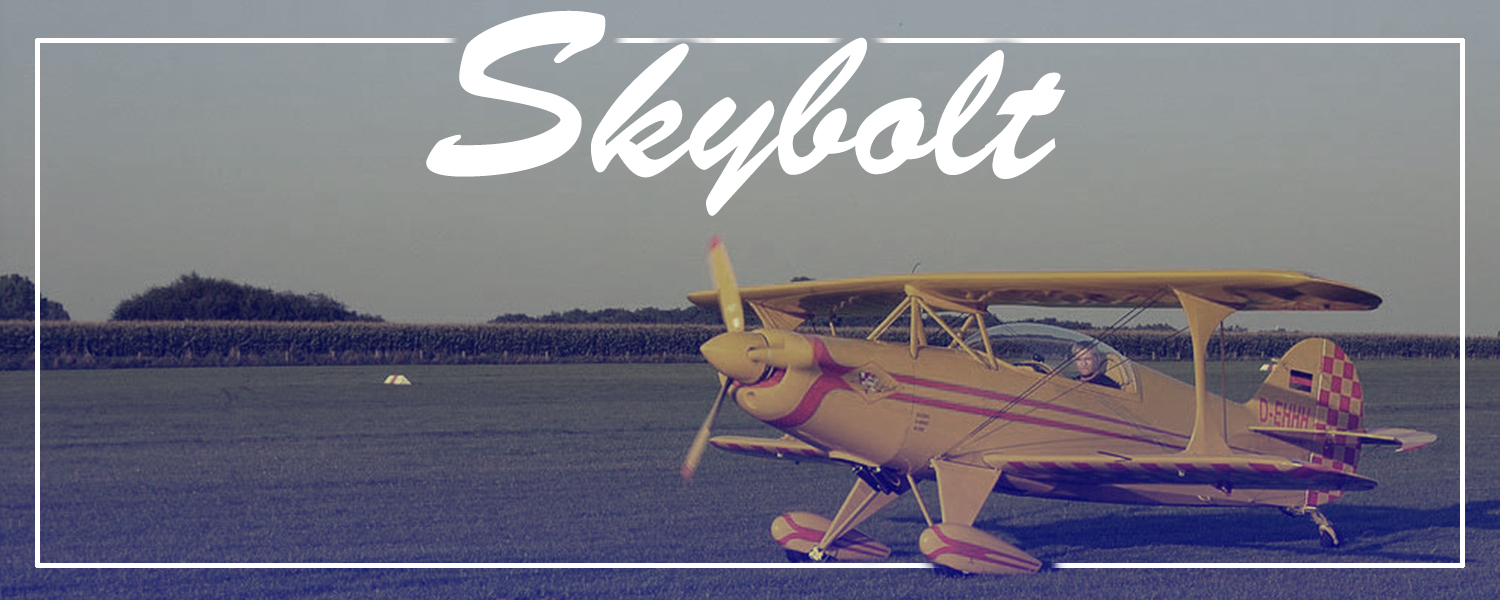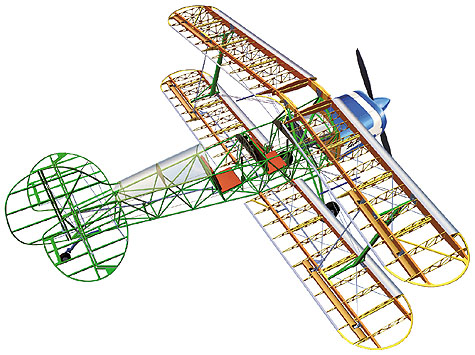
Steen Skybolt
Historical Information
Lamar Steen conceived the Skybolt in 1968 to fulfill a need for a high-performance two-place aerobatic biplane that could accommodate larger pilots comfortably (Lamar was a big guy). A secondary design objective was ease of construction. The prototype was built in just a year by the high-school shop class he taught at Denver’s Manual High School, as a project to teach wood, tube and fabric construction skills. The prototype, which began construction on August 19, 1969 and first flew in October 1970, cost about $5000 to build. It fulfilled the design goals admirably, providing spirited performance with a 180 hp Lycoming HO-360-B1B. Even at the 5600 ft MSL altitude of Lamar’s home airport the prototype would comfortably loop from level flight. The prototype cruised at 130 mph, and stalled at a manageable 55 mph. Lamar took the prototype on the airshow circuit and it raised quite a stir.
Lamar Steen started his aircraft design career with a low-wing plane named the Steenship, which first flew in 1966. Resembling a Stits Playboy, this original design was successful and shared some of the same features as the Skybolt… wood wings and a tube-and-fabric fuselage, and it was stressed for aerobatics. This plane is still flying today.
The Skybolt built up a solid reputation in experimental aviation, and Lamar began selling plans and parts. By the late ’70s, the Skybolt became the most constructed two-place experimental aircraft of all time. One Skybolt builder, Hale Wallace, developed a reputation for his attention to detail (learned by building and competing in world-class model aircraft) and became close friends with Lamar. In the early 1990s, Hale retired, bought Steen Aero Lab and the Skybolt rights from Lamar and started producing components in Rock Hill, NC. Hale also acquired rights to the Pitts S1-C,Pitts S1-SS, and Knight Twister designs as well as an agreement as the North American distributor of Bruntons Flying Wires. Hale passed away from cancer in the late 1990s, but not before transitioning ownership to a new team in Palm Bay, FL. The new incarnation of Steen Aero Lab continues to refine the design and improve the methods by which components are manufactured, using advanced capabilities in CAD/CAM automation.
It has definitely become easier than ever for to build a great Skybolt! Our extensive CNC machining and advanced fabrication capabilities allow us to provide components which are difficult for the homebuilder to make.

Nowadays, most Skybolts use quite a bit more power than the 180 hp of the prototype. Steen Aero Lab’s own “Yellowbird” N3HW, built by Hale Wallace, is on the high end of the power scale. The Lycoming IO-540 – normally a 235 hp engine – was rebuilt and modified by Monty Barrett to include his cold-air induction system. The engine dyno tests at 325 hp. We use a 4-blade MT prop (we were previously using a 3-blade Hoffmann prop, originally installed by Hale – Steen is a distributor for both MT and Hoffmann.) In addition, Hale did many things to keep the airplane’s weight down – an important mindset with any kind of flying machine. Titanium was used extensively throughout the airplane to reduce weight, in places like the firewall, heavy bolts, drag/anti-drag wires, push-pull tubes, etc.
Indeed, the Yellowbird is a rocket ship!
The climb rate is well in excess of 3000 fpm (that was the case at Hale’s home field in Marion NC – at 1212 ft MSL – and is even better at Steen’s new home in Melbourne FL… airport elevation 33 ft MSL!) Cruise speed is near 180 mph TAS, with fuel burn at that speed less than 14 gph.
Obviously, every airplane is as unique as the builder, and no two experimental aircraft will ever be identical. While our airplane was built with great care and uses a few options that many people choose not to include, it really can’t be considered “extensively modified”. These options are all readily available to the typical builder, should they choose to do them… that’s the beauty of an amateur-built airplane. Many folks prefer to have an open cockpit, some with a bubble only over the rear seat. A 260 hp engine is very common in many Skybolts, and is plenty of power for the routine aerobatics and sport flying that most builders desire. But if you like aggressive, pop-the-eyes-out-of-your-head aerobatics, then the Skybolt is certainly up to the task!